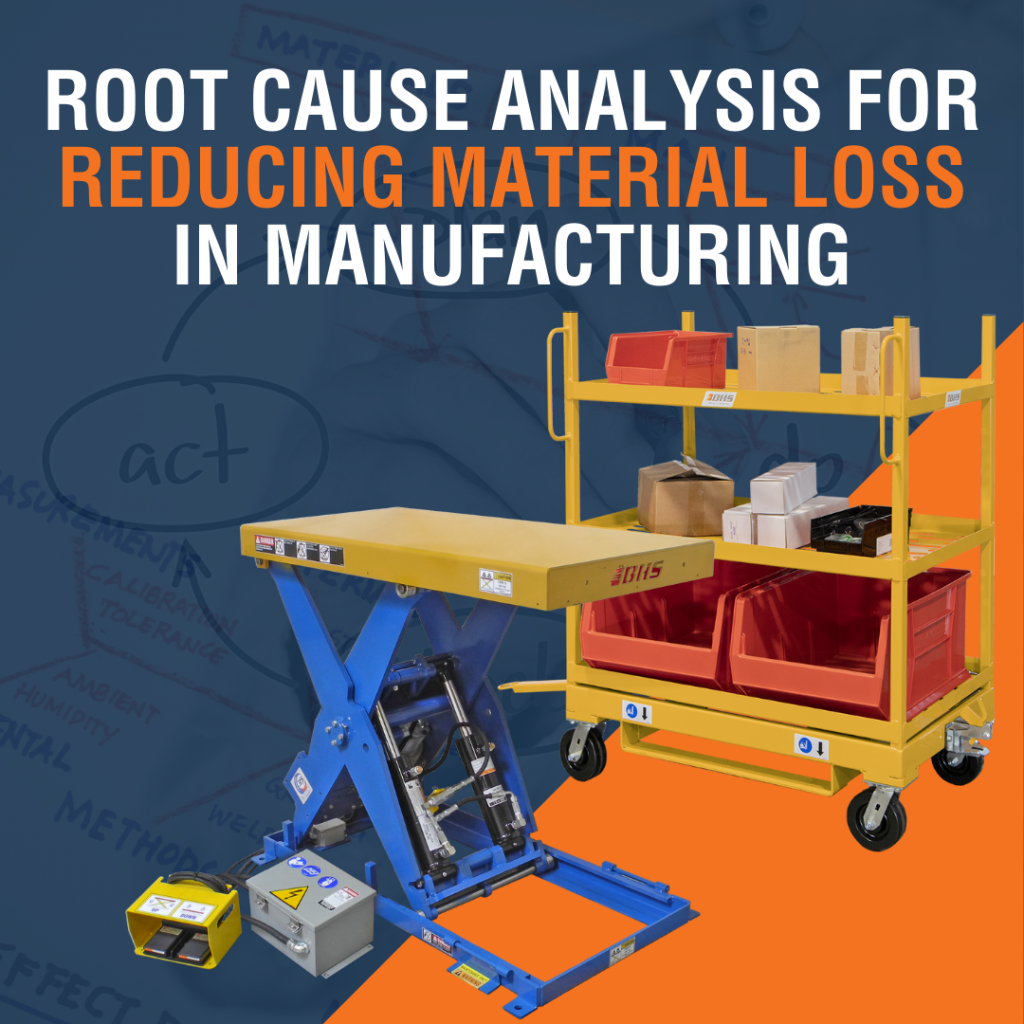We use cookies to make your experience better. To comply with the new e-Privacy directive, we need to ask for your consent to set the cookies. Learn more.
Root Cause Analysis for Reducing Material Loss in Manufacturing
Recognizing process failures is a key step in adopting the practices of lean manufacturing. Organizations must constantly look for inefficiencies that affect throughput, but in a busy facility, identifying the root causes of those issues can be difficult.

Whether or not your operation has committed to a lean approach, a manufacturing root cause analysis can be extraordinarily beneficial, particularly when you’re encountering higher-than-expected levels of material loss. Lost materials are an obvious nonconformity, and they can be expensive — you’ll need to look closely at the problem to find permanent solutions.
The purpose of the analysis is to take a scientific approach to problems, which can help you plan more effective solutions. In this article, we’ll discuss a few tools that can make root cause analysis easier and more intuitive.
Document Every Potential Root Cause, Not Just One
The first step of a manufacturing root cause analysis is defining the problem. The problem should be explainable in simple language:
- “Our order pickers aren’t keeping up with demand.”
- “Orders aren’t shipping within established timeframes.”
- “Order sizes vary, but we use the same process for every customer.”
When material loss is the problem, you can begin by simply defining the extent of the losses, along with your goals (in some instances, “no material loss" is a perfectly acceptable goal).
After determining what the problem is, you can determine why it occurred. The term “root cause" can be misleading because it implies that all lean manufacturing issues stem from a single nonconformance. Of course, this isn’t necessarily the case. When analyzing the problem, you might find several issues; lost materials may occur due to poor training, a lack of accountability, and sub-par material handling equipment.
Look for human, equipment, and organizational causes. Evaluate the entire material flow, not just the point in time where material loss occurs most frequently. Note every possible cause while examining the problem. Don’t attempt to simplify a complex problem, particularly at the early stages of your manufacturing root cause analysis.
Using the PDCA Cycle in Manufacturing Root Cause Analysis
Many manufacturers use the “Observe, Plan, Do, Check, Act,” or OPDCA cycle. After defining the problem and goals, collect as much data as possible. This is the Observation phase, and it’s an excellent time to involve your entire team.
The other phases of the PDCA cycle will include:
- Plan - Set realistic objectives and find simple solutions that would move your team closer to those goals.
- Do - Implement the solutions. This could mean purchasing better material handling equipment, refining your personnel training, or establishing improved processes for monitoring and reporting material loss.
- Check - Collect information to evaluate whether your solutions addressed the root cause of the inefficiency.
- Act - Make additional improvements to your solutions to move closer to your goals.
This may seem like a simple framework for evaluating inefficiencies — and it is simple, by design. A clear root cause analysis process will allow your team to find real solutions instead of just creating temporary fixes for major problems.
Using Ishikawa (Fishbone) Diagrams in Manufacturing Root Cause Analysis
An Ishikawa cause-and-effect diagram (also called a “fishbone" diagram) can be used during the observation and planning stages of the OPDCA cycle. While meeting with your team, define the problem and write it down. Ask for the root causes of that problem.
Write each root cause to the side with an arrow or line leading to the problem. Categorize similar issues; for example, if several employees point out different equipment issues, keep those causes under an “equipment" heading.
Visualizing the issue can help to showcase all of the root causes. Ask “why" frequently, and make sure you involve the workers that have encountered the material loss — they’ll be able to identify whether better material handling equipment, environmental improvements, or more manpower could help your team meet the objective.
Lean Manufacturing Starts with Proper Material Handling Equipment
During your root cause analysis, you might identify a dozen issues that contribute to a single problem. You’ll need to prioritize your solutions effectively to meet your objectives.
Pay close attention to any causes that could be addressed by improving equipment throughout your facility. These solutions can be implemented fairly quickly, and if you’ve already identified an equipment-related efficiency issue, you can virtually guarantee a return on investment.
The exact equipment needed will vary depending on your operation and its unique material flow. For example, replacing a stationary platform with a Scissor Lift Table could reduce physical stress for employees, limiting material loss while improving throughput. Providing workers with an Order Picking Cart could address known issues during unloading, stocking, parts gathering, or picking merchandise. If you’ve completed a thorough root cause analysis, you’ll know where to invest.
Finally, make sure that all equipment is ergonomically designed. BHS offers a full range of material handling equipment engineered with ergonomic principles in mind, and our extensive customization options can help your facility realize the full benefits of a lean approach. For more information, contact our team at 1.800.BHS.9500.
